Energy consumption
in the eco house
Energy consumption has, and will continue to be, the main preoccupation of any house owner. Now typical energy bills amount to the equivalent of one and a half, or two months salary, we must make every effort to save money. Get ready for a little rundown of how our house saves energy.
Whether you stay on our site as a tourist, or as a student, we expect everyone to learn a little bit about conservation of energy. This eco house is incredibly economical, and has some of the most modern technology installed.
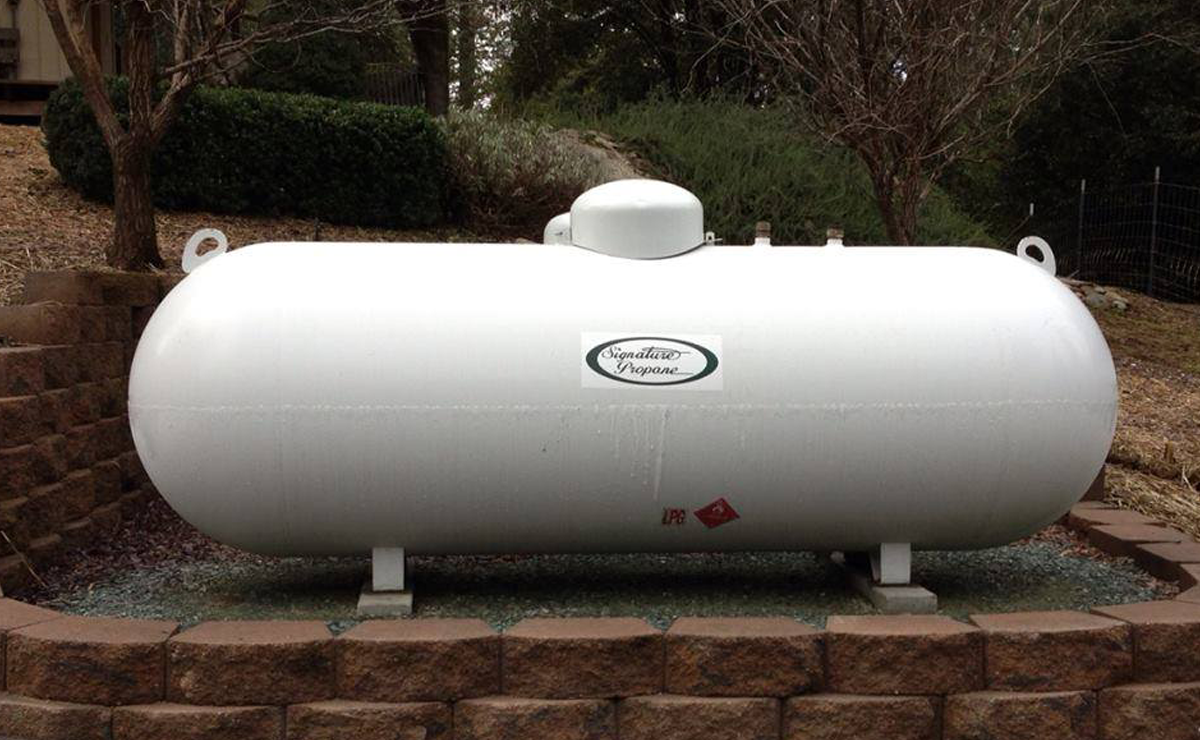
In the garden is a propane tank, on a concrete slab. In 1992 we signed a long rental contract with "Primagaz", then of Nancy, now of Reims, that ensures that the tank stays in place, but remains the property of "Primagaz".
At the moment we only use gas for cooking, so consume almost nothing. IN fact we haven't had new gas delivered for several years. We live in the main building, where we heat only with wood, at a cost of about €400 per year. If we turned the gas on, these costs would rise, because the central heating is designed to heat all 600m² of living space, so it is a very powerful burner.
Any new owner will take over the contract with "Primagaz" (unless he doesn't want to), and, if he were to return the gas tank, he'd receive the deposit of, I believe, around €700.
Gas burner
The Chappée gas burner is 64kW, and although it is a big machine, has low consumption, and through the radiators, heats all parts of the house perfectly. In a typical year total heating and hot water costs (linked with solar panels) will amount to around €2000. For the size of the house this is very reasonable. If you turn on this heating, you don't need to use any wood.
The Chappée burner has its own stainless steel conduite that goes up through the roof. It needs an annual maintenance that lasts half an hour and costs €60 (if being used), and is really only a hose down with the vacuum cleaner. It is a superb burner. After wood + solar, propane is the perfect back-up, especially with a building of various parts. The raw material costs are higher than other fuels, but the running costs and efficiency are excellent.
Of course we can then use Propane in the kitchen, which is our preferred cooking fuel, and will be again in the future.
At the moment we are only heating with wood. For that there is a wood burner in the living room of 19 which takes 1m lengths of wood (so it doesn't have to be cut up when it gets delivered from the forest). We are currently burning about 12 m3 per year. The wood is cut and delivered by the mayor of the village, and he delivers and stocks for €25/m3, so for about €300 a year we are heating the house! As I write there is 20m3 stocked in the large garage, and 30 m3 in the garden covered with steel panelling to keep it dry. All of this wood would be sold with the house, so already you have enough wood to keep you warm for over three years!
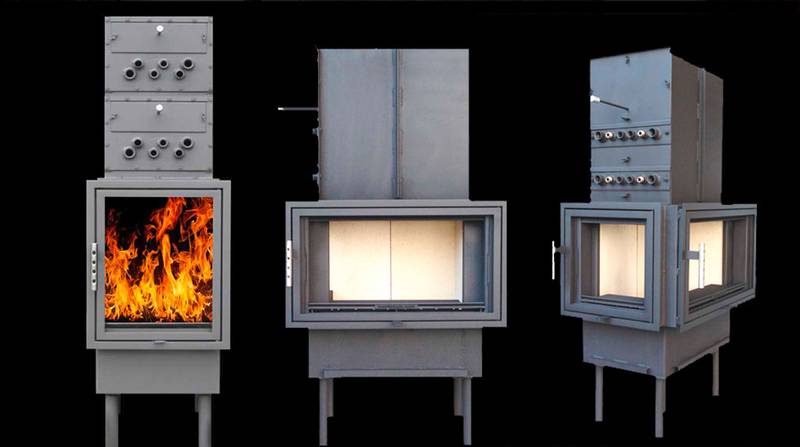
The wood burner is called a WERTSTEIN, and was hard to find. This company has now gone bust. It is essential that any technician servicing the Wertstein reads the two-page information manual we have created. We do all our own maintenance.
We drove all the way to Bavaria to get it, because such a machine doesn't exist on the French market. That also means that French heating engineers don't like working with it either, so it was installed by a German engineer.
It is very easy to light, because you can control the draw from the chimney with two simple pull bars at the top. There is also another control at the bottom, but we never need to touch this. To light the fire, you need to pull the bars out to their maximum to the right, and that gives you the maximum draw. You plug in the burner to the mains just next to the burner, which sets off a pump, that pumps your hot water back into the FORSTNER hot water tanks in the cellar, ready to use for the kitchen and showers, complimenting the solar energy. You light some kindling, shut the door, and in a few minutes the flames are burning hard.
As I write today it is December, and about 2°C outside, a bitterly cold day, but the sun is shining. When I did the washing up after lunch the water was piping hot, a sign that the sun has heated our water. I went down into the cellar to check the quantity of hot water we have left, and there is plenty, which is a sign that the wood burner has been heating water even when it has been cloudy outside.
The WERTSTEIN burns wood and heats not only your room, but also hot water. Linked into the solar panel system, regulated by computer, as soon as the water in the burner has reached a certain temperature, it gets pumped down into the cellar. The hot water tanks are well insulated, and hardly lose their heat at all. In winter the cellar is perfect for storing this water, because the cellar keeps a temperature around 10° C, considerably warmer than outside, or an attic room in winter. There is also no draught.
The stocked water is, according to the computer setting, prioritised for hot water - the bathrooms and kitchen. If the temperature and quantity is sufficient, it will also be pumped into the radiators, so turning the whole central heating. Because we are living sometimes in a smaller space, we aren't heating all the rooms. In fact the heat from the living room pervades through the whole house - it is a powerful machine.
The WERTSTEIN works in parallel with not only the solar panels, but also the gas burner. It is all registered on the computer. If the gas burner is on, you can still burn wood, (if you want) and it will contribute to the hot water and heating, so meaning you burn less gas.
One thing you shouldn't expect is that the WERTSTEIN turns the radiators on its own. The heat it creates is simply too variable to drive a thermostat controlled system where different temperatures are being measured in different rooms. It all depends what the outside temperature is too. But it will contribute a lot and save you gas.
The WERTSTEIN has a thermostat so there is no risk of the water over-heating. Similarly there is another thermostat in the Sanitaire to avoid any water arriving that is not the correct temperature.
In summer, once the fire is out, you simply have to unplug the pump.
The WERTSTEIN has functioned perfectly since its installation in 2004. Apart from cleaning the chimney once a year, there is almost no maintenance. Of course all of the service manuals are available. Our service document is easier to use.
Everybody should have a WERTSTEIN. A quite wonderful, simple, cheap, powerful, practical heating machine.
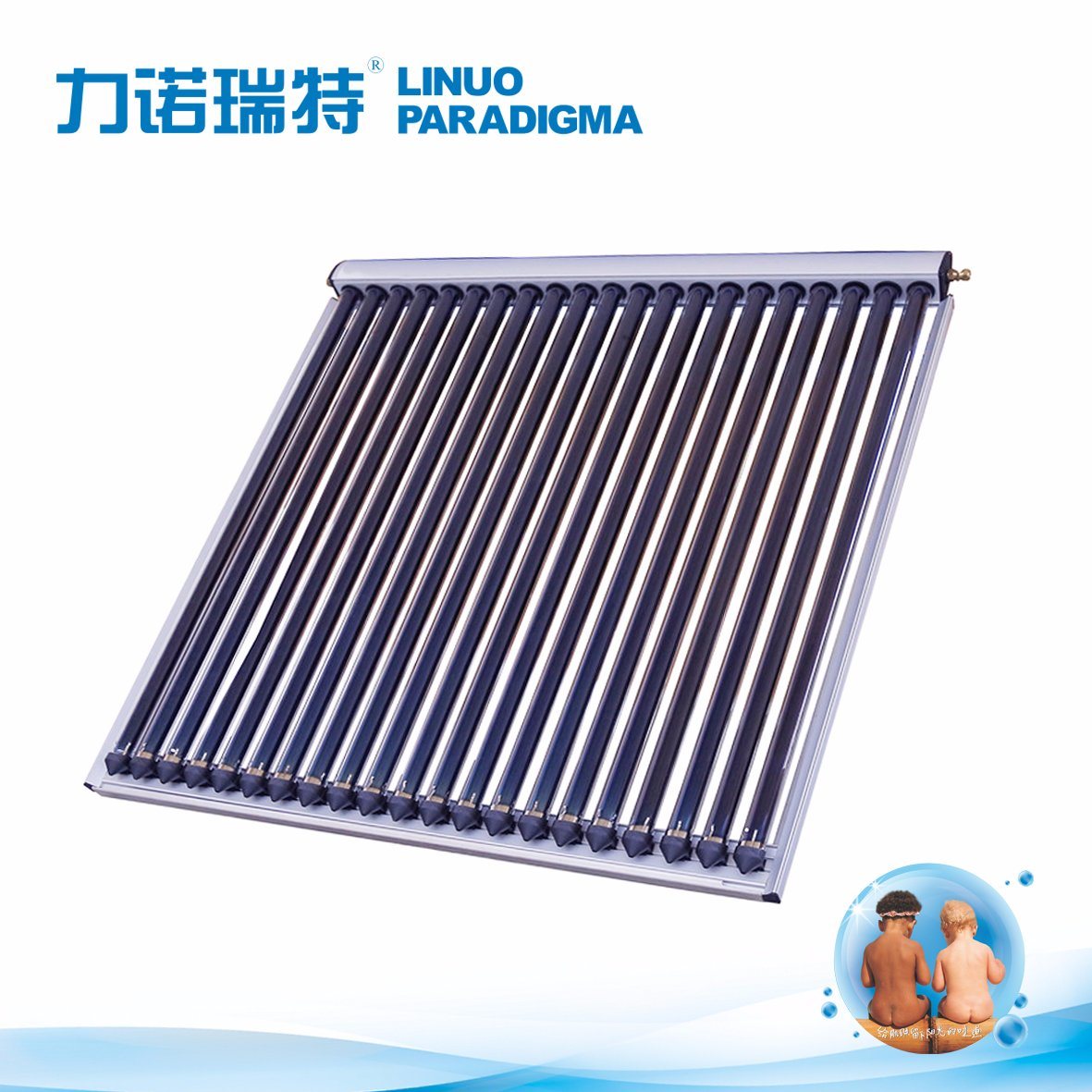
The solar panels PARADIGMA were also installed by the German engineer. At the time they were the most modern product on the market, and were unobtainable in France. Now they are obtainable from a company in Alsace called Tryba. We have already had contact with them, in case of need of parts and service, but since installation in 2005 we have had no service carried out on the panels - nothing has needed servicing. We have replaced one rubber joint on the FORSTNER water tanks. The whole system is on automatic.
On the roof are 14 m² of solar vacuum tubes, not panels. The vacuum tubes work much better than the panels and are filled with water, not anti-freeze. In the case of temperatures going below freezing, water is pumped back up from the cellar. This may seem like a waste of energy, but only enough water is pumped to stop it freezing, and in fact, as long as the fire is on, which it should be in winter, this is no problem. It is a slight energy loss, but much more environmentally-friendly than using anti-freeze.
In sunshine, even in winter, water gets pumped off the roof into the 2 x 860 L FORSTNER hot water tanks.The total value of this equipment is in the order of €40,000, without counting the installation costs. It is also a system that every house should have.
No sunshine
Where there is no sunshine, and not enough hot water, you can heat water by the wood burner WERTSTEIN, or gas burner CHAPPEE. You choose how you heat your water!
It is December, and still the solar is heating our water.
Similarly, the central heating is run by the gas burner.
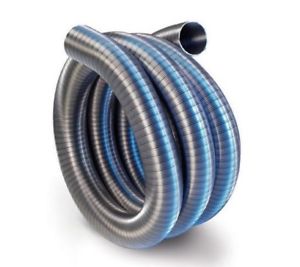
There are three chimneys in the house, all renovated and insulated at the time of the major renovations in 1999. The gas chimney is a steel tube and needs a vacuum every year. The Wertstein chimney is a steel tube Inside a traditional brick chimney. This needs a good brush down every year. The third is currently out of service. It is a chimney leading up from the kitchen.
. The gas burner CHAPPEE is equipped with its own stainless steel chimney leaving the Sanitaire and projecting through the roof. All you have to do to clean it is open the hatch at the base of the chimney and give a few sucks of vacuum cleaner. The idea is that some dust collects in there, but I've never seen any - it must all escape. Burning is pretty much smoke free. The last maintenance check on the CHAPPEE was in 2018.
. The big chimney in the main building in the living room on the WERTSTEIN is a stainless steel tube that passes through the original ham-smoking chimney of the old kitchen. It has a very wide flue, so it draws hard, but the inner tube regulates the flow. The chimney needs cleaning every year, and although by law it should be carried out by a firm, and stamped on a bill for insurance purposes, I recommend being able to do it yourself, because it requires manipulation of the tube and burner that is unusual for French installations. You want it done properly too, by cleaning the Wertstein heating channels at the same time. This was last done in 2018.
You need to find a dry, no wind day in September before you've even thought about lighting the fire. Find a small bucket, a metal scraper and a set of chimney brushes (sold with the house). One person goes up on the roof through the VELUX of Cha4, removes the concrete chimney cover, and breaks off any soot or tarry deposits around the lip of the chimney. It breaks easily. Immediately a second person should cover the bottom end with a plastic bag to collect soot. The person on the roof passes the soot brush several times and the chimney is clean. The soot hardly sticks to the steel.
The person below removes the black plastic bag, and guides the tubing back onto the burner if it has been displaced.
All of this work takes no longer than an hour, and although it can get a bit messy, you can limit the spread of any soot flying. The last cleaning was done in September 2017. I believe if you do it yourself you can be sure that it is done properly. It's an easy job for any chimney sweep too, but make sure you watch him whilst he's doing it!
. there is a small chimney on the South side of the house, next to 17 Grande Rue, that was the chimney for our first kitchen/dining room, when we had two wood burners. Because the new burner is so powerful, we have blocked up this chimney and the steel tubing is now hidden in the false ceiling above the kitchen. If ever you wished to put in another wood burner in the kitchen, you simply have to break a hole through the ceiling, and all of the tubing is present. It is a smaller chimney than in Sal1, so has a slower draw. I'd recommend cleaning the chimney yourself, like the other one, to make sure it's done properly.
Occasionally you hear of chimney fires breaking out in the village, but this is people who burn plastic bottles and newspapers on their fires. ONLY wood should be burned, preferably hard wood.
For electricity, the whole house was made conform to standards in 2004, with a highly sensitive main trip switch that should prevent all incidents of accidental shock - it trips when there are any abnormal current surges, or short circuits. Sometimes even a strong wind can trip it by blowing cables around on the street. This trip is now law and is an important safety feature.
The fuse box and main switch is at the entry to the main garage Gar2. All of the fuses are modern highly sensitve trip fuses, and all of the various circuits are indicated on the labelling. The meter is read digitally, but occasionally there is still a visit from a meterman. We consume about €800 a year, sounds expensive, but electricity is about half the price that it is in UK, and a third of the German price. Watch out! The electricity price is set to rise sharply.
The whole house is equipped with TV cables. We use two satellite dishes fixed on a pole on the South facing wall on the main house. There is also an antenna on the gîte that is also cabled everywhere, but it now needs a booster and receiver box wherever you want to watch French TV. We watch German and English TV most of the time.
Where you'd like to watch TV, we can arrange to link up the satellite dish with the correct room. It takes a few minutes.
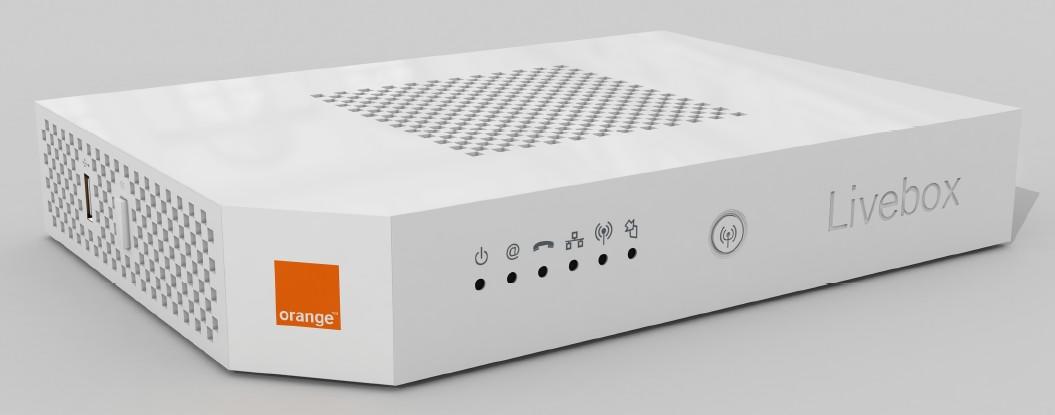
The telephone number of the house is 03 29 90 43 95 with several telephone sockets all over the house, including in the bedroom Ch3 on the First floor of 19. We've had a Live Box branched onto this line for several years. This has a fixed fee of about €80 a month, for unlimited fast internet access, one mobile phone, and free phone calls, also to European numbers, also to mobile numbers. So the fixed line is important. In fact, mobile phones don't work well in the house because of being situated below a South facing hill. If you go outside upslope a little beyond the Mairie, you'll get a mobile signal.
The gîte did used to have its own phone line 03 29 90 43 90, and this can be renewed again no problem. The connection is in the ceiling above the small garage entry door of 19.
A telephone line is also installed in the apartment, but has never been linked up to Telecom.
All doors and windows were replaced in 2005 (except in the gîte - 1992, and some in 2018) , and conform to the most recent of energy norms. They were installed by Haxel, of St Mihiel, who did an excellent job.
Total Energy costs. Get ready for an unbelievable figure!
We aren't using the central heating at the moment, and our only energy cost, except from electricity, is €300 a year for wood. The rest comes from the sun. It's a real Eco-house!
